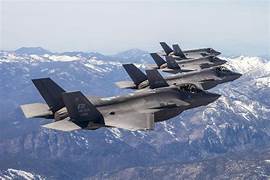Introduction:
The Financial Services and Markets Act (FSMA) has long been a cornerstone of the UK’s financial regulatory framework, providing a robust legal framework for overseeing and regulating financial services and markets. As of 2024, the UK has implemented several reforms under the updated version of the act, aiming to bolster the resilience and competitiveness of its financial sector while safeguarding consumer interests. In this article, we delve into the key achievements of the Financial Services and Markets Act 2024 and explore the challenges and opportunities that lie ahead for the UK’s financial industry.
Enhanced Consumer Protection:
The FSMA 2024 introduced significant enhancements to consumer protection measures. Stricter rules have been imposed on financial institutions to ensure transparency in product offerings and clear communication of risks to customers. Additionally, the act empowered the Financial Conduct Authority (FCA) to take swifter action against mis-selling and unethical practices, providing consumers with greater confidence in the financial products and services they avail.
Strengthening Financial Stability:
Amidst an ever-evolving global financial landscape, the FSMA 2024 emphasized the importance of maintaining financial stability. The act equipped regulators with broader supervisory powers, enabling them to proactively address emerging risks and vulnerabilities in the financial system. Stringent stress testing and risk assessment requirements were also introduced for financial institutions, ensuring they are better prepared to weather potential economic downturns.
Embracing Fintech and Innovation:
Recognizing the transformative potential of fintech, the FSMA 2024 paved the way for fostering innovation in the financial sector. Regulatory sandboxes were established to facilitate controlled testing of new products and services, encouraging startups and established players alike to explore novel financial technologies. This approach helped the UK maintain its status as a leading fintech hub, attracting investment and driving economic growth.
Addressing Climate Change Risks:
In response to the growing urgency of climate change, the FSMA 2024 placed a renewed focus on incorporating environmental, social, and governance (ESG) considerations into financial decision-making. The act mandated financial institutions to assess and disclose climate-related risks in their operations and investments, contributing to the UK’s commitment to achieving net-zero carbon emissions by 2050. This measure also aligned with global efforts to promote sustainable finance and responsible investing.
Navigating Post-Brexit Challenges:
The UK’s departure from the European Union presented both challenges and opportunities for the financial sector. The FSMA 2024 sought to provide regulatory clarity and stability during the post-Brexit period, making the UK an attractive destination for financial firms seeking new bases outside the EU. Moreover, the act enabled the UK to forge new trade agreements and partnerships, expanding its financial services market globally.
What Comes Next?
Looking ahead, the UK’s financial industry faces several critical tasks and opportunities:
Maintaining Regulatory Agility:
As the financial landscape continues to evolve, regulators must remain agile to address emerging risks and technological advancements effectively. Striking the right balance between fostering innovation and safeguarding financial stability will be crucial to sustain the sector’s growth.
Embracing Digital Transformation:
The digital revolution in finance is gaining momentum, with blockchain, AI, and digital currencies reshaping traditional financial services. Embracing digital transformation will be vital for financial institutions to stay competitive and meet evolving customer demands.
Addressing Cybersecurity Challenges:
With the increased reliance on digital infrastructure, cybersecurity threats loom larger than ever. Financial firms must prioritize robust cybersecurity measures to protect customer data and maintain the trust of their clients.
Inclusivity and Financial Education:
The FSMA 2024 laid the groundwork for greater consumer protection, but promoting financial literacy and inclusivity remains crucial. Initiatives to improve financial education and widen access to financial services will foster a more inclusive and resilient financial ecosystem.
Conclusion:
The Financial Services and Markets Act 2024 represents a decisive step forward for the UK’s financial industry, fortifying consumer protection, promoting innovation, and addressing pressing environmental challenges. As the sector navigates post-Brexit realities and embraces technological transformations, its ability to adapt, innovate, and prioritize sustainability will shape its future success. By capitalizing on opportunities while effectively managing risks, the UK can continue to strengthen its position as a global financial hub in the years to come.




















